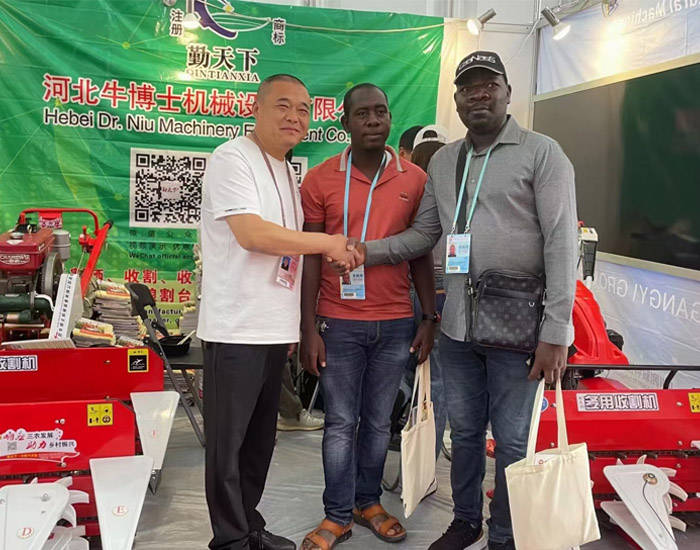Efficient Design of a Mechanical Rice Harvesting Machine for Modern Agriculture Production
The Mechanical Rice Reaper Revolutionizing Agriculture
The agricultural landscape has undergone significant transformation over the past century, and one of the most impactful innovations has been the invention and widespread use of mechanical rice reapers. This agricultural machine is designed to streamline the harvesting process, improve efficiency, and ultimately enhance food production to meet the demands of a growing population. In this article, we will explore the evolution, benefits, and challenges of mechanical rice reapers in modern agriculture.
The Evolution of Rice Harvesting
Historically, rice harvesting was a labor-intensive process, requiring substantial human effort and time. Traditional methods involved manual harvesting with sickles, which were not only physically demanding but also time-consuming. As populations increased and the demand for food intensified, the need for more efficient agricultural techniques became evident. The invention of the mechanical rice reaper in the early 20th century marked a pivotal moment in agricultural technology.
The first mechanical rice reapers were relatively simple machines, designed primarily to cut rice plants at the base. Over time, technological advancements led to more sophisticated models that could not only cut the rice but also thresh and bundle it. This progression allowed farmers to harvest larger areas in significantly less time, fundamentally changing how rice was produced.
Benefits of Mechanical Rice Reapers
The introduction of mechanical rice reapers brought about numerous benefits to farmers and the agricultural industry as a whole. Primarily, these machines enhance efficiency. A single mechanical reaper can replace dozens of laborers, enabling a farmer to harvest several acres in a day rather than over a week or more using manual methods. This efficiency helps reduce labor costs and allows farmers to allocate their workforce to other critical agricultural tasks.
In addition to improving efficiency, mechanical rice reapers also contribute to higher yields. The precision of these machines means that crops are harvested at optimal times, minimizing losses due to overripening or weather-related issues. Furthermore, modern reapers are equipped with features that reduce grain damage during harvesting, ensuring that more of the crop is collected and can be sold or consumed.
mechanical rice reaper

Moreover, mechanical rice reapers promote the safety and well-being of agricultural workers. Manual harvesting can lead to physical strain and injuries over time, especially in regions where fields are large and terrain can be challenging. By utilizing mechanical reapers, the risk of accidents and injuries is significantly reduced, contributing to a safer work environment.
Challenges and Considerations
Despite their many advantages, the adoption of mechanical rice reapers is not without challenges. The initial investment cost of purchasing these machines can be prohibitive for smallholder farmers. Additionally, there may be a lack of access to maintenance services and spare parts in rural areas, leading to difficulties in keeping the equipment in good working condition.
Another consideration is the environmental impact. While mechanical harvesting can lead to increased efficiency, there are concerns regarding the soil's health and the potential for increased herbicide and pesticide use. Sustainable practices must be integrated into the operation of mechanical rice reapers to ensure that soil quality and biodiversity are maintained.
Furthermore, the shift toward mechanization can lead to job displacement in farming communities. As machines replace manual labor, there is a risk that many workers may find themselves without employment. It is essential for governments and agricultural stakeholders to implement training programs that equip former laborers with new skills suited for the changing agriculture landscape.
Conclusion
In conclusion, the mechanical rice reaper represents a significant step forward in agricultural technology, transforming the way rice is harvested and contributing to increased productivity. While there are challenges associated with its adoption, the benefits in terms of efficiency, yield, and worker safety cannot be overlooked. As agriculture continues to evolve, embracing both technological advancements and sustainable practices will be vital to ensuring food security and supporting farmers worldwide. The future of rice cultivation lies not only in the machines that harvest but also in the commitment to responsible stewardship of our agricultural resources.
Latest news
-
When to Upgrade Your Old Forage HarvesterNewsJun.05,2025
-
One Forage Harvester for All Your NeedsNewsJun.05,2025
-
Mastering the Grass Reaper MachineNewsJun.05,2025
-
How Small Farms Make Full Use of Wheat ReaperNewsJun.05,2025
-
Harvesting Wheat the Easy Way: Use a Mini Tractor ReaperNewsJun.05,2025
-
Growing Demand for the Mini Tractor Reaper in AsiaNewsJun.05,2025







